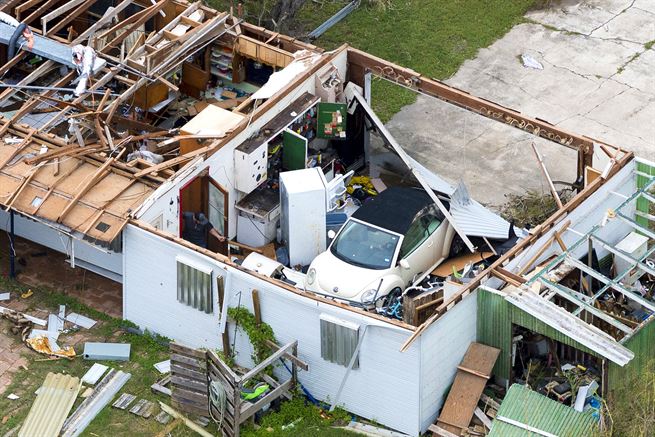By: Jessica Wentz
The Kerry-Lieberman (KL) bill addresses Clean Energy Technology and Jobs in Title IV, Subtitle B, Parts I, III, and IV, §§ 4101 – 4162, starting on page 829. In this Subtitle, the KL bill creates programs for promoting clean energy jobs, mitigating greenhouse emissions through contracts with landowners, and encouraging the development of green technologies.
Part I of Subtitle B, entitled “Clean Energy Career Development”, creates several programs to benefit of employees and potential employees in renewable energy sectors. These include Clean Energy Curriculum Development Grants, an Information and Resource Clearinghouse for vocational education and job training in renewable energy sectors, and a Clean Energy Construction Careers Demonstration Project.
Section 4104 permits the Secretary of Education to award grants on a competitive basis to eligible partnerships to develop programs of study that are focused on emerging careers and jobs in the fields of clean energy, renewable energy, energy efficiency, climate change mitigation, and climate change adaptation (Clean Energy Curriculum Development Grants). Eligible partnerships are to include at least one local educational agency, one post-secondary institution, and representatives of the community, including businesses, labor organizations and green industries. §4104.
Section 4102 directs the Secretary of Labor, in collaboration with the Secretary of Energy and the Secretary of Education, to develop an Internet-based Information and Resources Clearinghouse to aid career and technical education and job training programs for the renewable energy sectors. §4102.
The KL bill requires that the Clearinghouse contain separate sections developed for each of the following renewable energy sectors:
(A) Solar energy systems
(B) Wind energy systems
(C) Energy transmission systems
(D) Geothermal systems of energy and heating
(E) Energy efficiency technical training
The Clearinghouse is also required to contain information on basic environmental science and processes needed to understand renewable energy systems; Federal government and industry resources; points of contact to aid institutions in the development of placement programs for apprenticeships and post-graduation opportunities; and information and tips about green workplaces, energy efficiency, and relevant environmental topics, including information on available industry recognized certifications in each of those areas. §4102.
Section 4103 directs the Secretary of Labor, in consultation with the Secretary of Energy, to establish a Clean Energy Construction Careers Demonstration Project. The purpose of the demonstration project is to promote middle class careers and quality employment practices in the green construction sector, and advance efficiency and performance on construction projects relating to the Act. §4103.
Part III of Subtitle B, entitled “Agriculture”, contains provisions for mitigating greenhouse emissions through contracts with landowners. Section 4152 directs the Secretary of Agriculture to establish, and jointly administer with the Secretary of the Interior, a Carbon Conservation Program for the purpose of promoting greenhouse gas emission reductions or carbon sequestration. In carrying out the program, the Secretaries are required to provide incentives to landowners to carry out projects and activities that reduce greenhouse gas emissions or sequester carbon. §4152.
The Secretary of Agriculture is permitted to offer carbon sequestration contracts under the program for a period of 10 years to farmers, ranchers and forest owners who perform projects or activities to reduce greenhouse gas emissions or sequester carbon. The amount of compensation provided under a contract is commensurate with the emission reductions obtained or avoided and the duration of the reductions. In addition to these contracts, the bill specifies that at least 30% of the funds provided for the program be used for conservation easements. The Secretary of Agriculture is required to enroll acreage into the program through the use of permanent conservation easements, which provide a measurable carbon sequestration benefit and meet additional requirements in the subsection. §4152.
Section 4153 establishes a separate Treasury account, to be known as the “Carbon Conservation Fund”, to be used for the Carbon Conservation Program. §4153.
Part IV of Subtitle B, entitled “Manufacturing and Technology”, contains provisions for encouraging research on and development of low carbon industrial technology. Section 4161 directs the Secretary of Commerce to establish a federally funded research and development center to support development and demonstration of technology that provides immediate and long-term improvement in the competitiveness of and job creation in the manufacturing sector, and reduces the energy consumption and greenhouse gas emissions of domestic manufacturers. This center shall be known as the “National Industrial Innovation Institute”. §4161.
Comparison to Waxman-Markey
The Waxman-Markey (WM) bill discusses clean energy technology and jobs in Title IV, Subtitle B, “Green Jobs and Worker Transition”. In this Subtitle, the WM bill creates many of the same programs that are created in the KL bill, including Clean Energy Curriculum Development grants (§421), an Internet-based Information and Resources Clearinghouse to provide information on green jobs (§423), and a Green Construction Careers Demonstration Project (§424A). These programs have effectively the same requirements in the WM bill as in the KL bill.
Subtitle B of the WM bill also contains additional provisions to increase the funding for the Energy Worker Training Program (created by the Green Jobs Act of 2007) by $25,000,000, and to create a financial assistance program for workers employed in energy industries, as well as industries that are closely connected to energy industries (such as energy-intensive manufacturing industries). §§ 425-427.
The WM bill discusses Agriculture and Renewable Energy Incentives Programs in section 788 of Title VII, Subtitle B. Like the KL bill, it directs the Secretary of Agriculture to establish an incentives program, by granting emissions allowances for activities undertaken in the agriculture sector that reduce greenhouse gas emissions or sequester carbon. §788.
The WM bill does not contain provisions for the creation of a National Industrial Innovation Institute, as the KL bill does. However, the WM bill does create several other programs, such as Energy Innovation Hubs (§171) and the Clean Technology Business Competition Grant Program (§196), for the purpose of supporting clean energy technological development, strengthening the competitiveness of the U.S. manufacturing sector while applying this green energy technology, and creating green jobs.


